There’s a moment that many people struggling with addiction describe with haunting clarity: the first time a substance didn’t make them feel high, but made them feel normal. For the first time in their lives, they felt what they imagined everyone else felt like all the time—calm, confident, capable of handling life. This experience, often dismissed as merely “self-medicating,” actually reveals something profound about the neurobiology of addiction and why certain people are devastatingly vulnerable to certain substances.
The old model of addiction as a moral failing or simple lack of willpower has crumbled under the weight of neuroscientific evidence. What we’re discovering instead is far more complex: addiction is fundamentally about the brain seeking equilibrium, and for some people, substances provide a neurochemical balance they’ve never experienced naturally. Understanding this changes everything about how we approach prevention, treatment, and recovery.
The Neurodiversity of Baseline: Why “Normal” Isn’t Universal
The Myth of the Neurotypical Baseline
We tend to assume everyone starts from the same neurochemical baseline—that “normal” brain function is universal. This assumption is not just wrong; it’s dangerous. Modern neuroimaging studies from institutions like the National Institute on Drug Abuse (NIDA) reveal tremendous variation in baseline neurotransmitter levels, receptor density, and neural pathway efficiency across individuals.
Some people are born with naturally lower levels of dopamine receptors, making them chronically under-stimulated. Others have overactive amygdalas, leaving them in a constant state of anxiety. Still others have disrupted GABA systems, making relaxation nearly impossible. These aren’t disorders necessarily—they’re variations in human neurobiology that profoundly affect how someone experiences the world.
Dr. Nora Volkow, director of NIDA, has pioneered research showing that people with lower baseline dopamine D2 receptor availability are significantly more vulnerable to addiction. Her work, published in journals like Nature Neuroscience, demonstrates that these individuals don’t experience pleasure the same way others do—their reward system is fundamentally calibrated differently.
The Pre-Addiction Brain
Recent research from Stanford’s Addiction Medicine Clinic suggests that many people who develop severe addictions show neurobiological differences that predate any substance use:
Reward Deficiency Syndrome: Identified by Dr. Kenneth Blum, this involves genetic variations affecting dopamine signaling. People with RDS experience less pleasure from everyday activities—food tastes bland, achievements feel hollow, relationships seem muted. When they encounter a substance that floods their dopamine system, they’re not getting high; they’re experiencing what neurotypical people feel naturally.
Chronic Stress Response: Research from the Yale Stress Center shows that early trauma and chronic stress permanently alter the HPA (hypothalamic-pituitary-adrenal) axis. These individuals live in a state of constant physiological stress, with elevated cortisol and diminished prefrontal cortex function. Substances that dampen this stress response don’t make them feel euphoric—they make them feel calm for the first time.
Disrupted Endogenous Opioid System: Some people naturally produce fewer endorphins or have fewer opioid receptors. Dr. Jon-Kar Zubieta’s PET scan studies at the University of Michigan reveal that these individuals experience more physical and emotional pain from the same stimuli. When they use opioids, they’re not seeking a high—they’re seeking relief from chronic pain that others don’t experience.
The “Normal” Trap: Why Feeling Okay Is More Dangerous Than Feeling High
The Insidious Nature of Normalization
When someone uses a substance recreationally and feels euphoric, there’s a clear distinction between their normal state and the drug state. They can recognize the substance as foreign, as creating an artificial high. But when someone feels normal for the first time on a substance, something far more dangerous occurs: the substance becomes incorporated into their sense of self.
Dr. George Koob’s opponent process theory, detailed in his work on the “dark side of addiction” published in Neuropsychopharmacology, explains how this normalization creates a particularly vicious cycle. The brain, always seeking homeostasis, begins to adapt to the substance’s presence. What once made someone feel normal now merely prevents them from feeling terrible. The baseline shifts ever downward in a process called allostasis.
The Medication Hypothesis
Dr. Edward Khantzian’s self-medication hypothesis has evolved significantly since its introduction. Originally, it suggested people use substances to treat underlying conditions. But modern neuroscience reveals something more nuanced: people don’t just medicate symptoms; they medicate fundamental neurobiological differences.
Consider these substance-specific normalizations:
Stimulants and ADHD: Research from Massachusetts General Hospital shows that up to 40% of people with substance use disorders have undiagnosed ADHD. For these individuals, stimulants don’t provide energy—they provide focus. Methamphetamine or cocaine organizes their scattered thoughts, allows them to complete tasks, makes them feel capable. Dr. Timothy Wilens’ research demonstrates that proper ADHD treatment reduces addiction risk by 50%, suggesting that the drive to self-medicate with stimulants stems from genuine neurobiological need.
Opioids and Emotional Pain: Dr. Jaak Panksepp’s affective neuroscience research revealed that the same brain regions activated by physical pain are activated by social rejection and emotional distress. The University of Kentucky’s Social Neuroscience Lab has shown that people with certain genetic variants experience social pain more intensely. For them, opioids don’t create euphoria—they create the emotional resilience others take for granted.
Alcohol and Social Anxiety: Neuroimaging studies from the National Institute on Alcohol Abuse and Alcoholism show that people with social anxiety disorder have overactive amygdalas and underactive prefrontal cortexes in social situations. Alcohol dampens amygdala activity and temporarily restores prefrontal function. For these individuals, alcohol doesn’t make them drunk—it makes them capable of human connection.
The Neuroadaptation Cascade: How “Normal” Becomes Prison
The Homeostatic Trap
The brain’s fundamental drive toward homeostasis—maintaining stable internal conditions—becomes a prison when substances are involved. Dr. Eric Nestler’s groundbreaking work on ΔFosB at Mount Sinai’s Friedman Brain Institute reveals the molecular mechanisms of this trap.
When someone uses a substance to feel normal, several adaptations occur:
- Receptor Downregulation: The brain reduces the number of receptors for the neurotransmitters the substance affects, requiring more of the substance to achieve the same effect.
- Enzyme Upregulation: The brain produces more enzymes that break down the substance and its associated neurotransmitters, further reducing effect.
- Structural Changes: Repeated substance use actually changes brain structure. The prefrontal cortex shrinks, the amygdala becomes hyperactive, and the hippocampus loses volume.
- Epigenetic Modifications: Most frighteningly, addiction causes changes in gene expression that can persist for years or even be passed to offspring.
The Kindling Effect
First observed with alcohol withdrawal, kindling means each cycle of use and withdrawal becomes progressively worse. Dr. George Breese’s research at the University of North Carolina shows that repeated withdrawal episodes actually change brain structure, making the brain increasingly sensitive to stress and increasingly likely to seek substances for relief.
This creates a devastating progression:
- First use: Feels normal for the first time
- Early use: Needs substance to feel normal
- Middle stage: Needs substance to avoid feeling terrible
- Late stage: Substance no longer helps but withdrawal is unbearable
Modern Neurobiological Discoveries: Rewriting the Addiction Narrative
The Default Mode Network Revolution
Perhaps the most revolutionary discovery in addiction neuroscience involves the default mode network (DMN), the brain’s “resting state” network discovered through fMRI studies at Washington University in St. Louis.
Dr. Marcus Raichle’s team found that people with addiction show fundamental differences in their DMN:
- Increased self-referential thinking (obsession with obtaining substances)
- Decreased connectivity with executive control networks
- Hyperconnectivity with reward networks
Fascinatingly, treatments that “reset” the DMN—like psilocybin therapy studied at Johns Hopkins Center for Psychedelic Research—show remarkable success in treating addiction, suggesting that the DMN differences might be both a cause and consequence of addiction.
The Inflammation Connection
Dr. Antonio Verdejo-García’s research at Monash University reveals that chronic substance use causes neuroinflammation, which perpetuates addiction through several mechanisms:
- Disrupted dopamine signaling
- Increased anxiety and depression
- Impaired cognitive function
- Reduced neuroplasticity
This inflammation persists long after substance use stops, explaining why recovery is so difficult and why anti-inflammatory interventions show promise in addiction treatment.
The Gut-Brain Axis
Emerging research from the California Institute of Technology on the gut-brain axis reveals that addiction disrupts the microbiome, which in turn affects neurotransmitter production. Since gut bacteria produce 90% of the body’s serotonin and substantial amounts of GABA and dopamine, microbiome disruption perpetuates the neurochemical imbalances that drove initial substance use.
The Vulnerability Mosaic: Who Seeks Chemical Normal?
Genetic Architecture
The genetics of addiction are far more complex than originally thought. Rather than an “addiction gene,” researchers have identified hundreds of genetic variants that increase vulnerability. The Collaborative Studies on Genetics of Alcoholism has identified specific variants affecting:
- Alcohol metabolism (ALDH2, ADH1B)
- Dopamine signaling (DRD2, ANKK1)
- Stress response (CRHR1, FKBP5)
- Impulse control (GABRA2, CHRM2)
But genetics isn’t destiny. The field of epigenetics, pioneered by researchers like Dr. Moshe Szyf at McGill University, shows that environmental factors can turn genes on or off, explaining why identical twins don’t always share addiction vulnerability.
The ACEs Connection
The landmark Adverse Childhood Experiences Study revealed a dose-response relationship between childhood trauma and addiction risk. For each additional ACE, the risk of addiction increases substantially:
- 4+ ACEs = 500% increased risk of alcoholism
- 6+ ACEs = 4,600% increased risk of IV drug use
Dr. Vincent Felitti, one of the study’s authors, argues that addiction isn’t the problem—it’s an attempted solution to the problem of developmental trauma. Brain imaging shows that early trauma literally changes brain structure, creating the neurobiological differences that make substances feel normalizing.
The Sensitivity Spectrum
Dr. Elaine Aron’s research on Highly Sensitive Persons (HSPs) reveals that 20% of the population has nervous systems that process stimuli more deeply. These individuals are more affected by:
- Environmental stimuli (lights, sounds, textures)
- Emotional stimuli (others’ moods, conflict)
- Physical stimuli (pain, hunger, fatigue)
HSPs are overrepresented among people with addiction, suggesting that substances provide relief from overwhelming sensory and emotional input that others don’t experience.
The New Treatment Paradigm: Addressing the Underlying Normal
Precision Medicine Approaches
The future of addiction treatment lies in precision medicine—tailoring interventions to individual neurobiology. Yale’s Clinical Neuroscience Research Unit is pioneering approaches including:
Neuroimaging-Guided Treatment: Using fMRI and PET scans to identify individual brain differences and select targeted interventions.
Pharmacogenetic Testing: Analyzing genetic variants to predict medication response and avoid treatments likely to fail.
Biomarker Monitoring: Tracking inflammatory markers, neurotransmitter metabolites, and stress hormones to guide treatment adjustments.
Addressing the Deficit, Not Just the Addiction
Progressive treatment centers like the Hazelden Betty Ford Foundation are moving beyond abstinence-only models to address underlying neurobiological differences:
Medication-Assisted Treatment (MAT): Using medications like buprenorphine, naltrexone, and acamprosate not as substitutes but as neurochemical stabilizers that allow the brain to heal.
Neurofeedback: Training the brain to achieve healthier patterns through real-time EEG feedback, essentially teaching the brain to find its own balance.
Transcranial Magnetic Stimulation (TMS): Using magnetic fields to stimulate underactive brain regions, particularly the prefrontal cortex, restoring cognitive control.
The Psychedelic Renaissance
Research from institutions like Imperial College London’s Centre for Psychedelic Research shows that psychedelics can “reset” addicted brains:
Psilocybin: Shows 80% success rates for tobacco addiction and promising results for alcohol MDMA: Combined with therapy, helps process trauma underlying addiction Ibogaine: Interrupts opioid addiction and provides psychological insights Ketamine: Rapidly treats depression that often co-occurs with addiction
These substances appear to work by temporarily dissolving the rigid neural patterns that maintain addiction, allowing new, healthier patterns to form.
The Social Dimension: How Connection Creates Natural Normal
The Rat Park Revolution
Dr. Bruce Alexander’s Rat Park experiments revolutionized our understanding of addiction’s social dimension. Rats in enriched environments with social connection rarely chose morphine-laced water, while isolated rats became addicted. This suggests that connection and community provide the neurochemical regulation that substances artificially create.
The Portugal Model
Portugal’s radical decriminalization and treatment approach, studied by the European Monitoring Centre for Drugs and Drug Addiction, demonstrates this principle at scale:
- Drug-related offenses dropped 95%
- HIV infections among drug users dropped 94%
- Drug-related deaths dropped 80%
- Overall drug use declined, especially among youth
By treating addiction as a health issue and emphasizing connection over punishment, Portugal helped people find natural sources of neurochemical balance.
Connection as Medicine
Dr. Johann Hari’s synthesis of addiction research in Chasing the Scream argues that “the opposite of addiction is not sobriety, it’s connection.” Neuroscience supports this:
- Social connection activates endogenous opioid systems
- Meaningful relationships regulate stress hormones
- Community involvement increases dopamine and serotonin
- Physical touch releases oxytocin, reducing anxiety
The Recovery Revolution: Building a Better Normal
Neuroplasticity and Hope
The discovery of adult neuroplasticity—the brain’s ability to form new neural pathways throughout life—offers tremendous hope. Dr. Michael Merzenich’s research at UCSF shows that targeted interventions can literally rewire addicted brains:
Cognitive Training: Specific exercises can strengthen prefrontal cortex function, improving impulse control and decision-making.
Mindfulness Meditation: Regular practice increases gray matter density in areas damaged by addiction, particularly the hippocampus and prefrontal cortex.
Exercise: Aerobic exercise stimulates BDNF (brain-derived neurotrophic factor), promoting new neuron growth and improving mood regulation.
The Timeline of Healing
Understanding the neurobiological timeline of recovery helps maintain hope during difficult periods:
Weeks 1-2: Acute withdrawal as the brain rebels against the absence of substances Months 1-3: Post-acute withdrawal syndrome (PAWS) as the brain slowly recalibrates Months 3-6: Gradual improvement in cognitive function and emotional regulation Months 6-12: Significant structural brain changes become apparent Years 1-2: Continued healing, though some changes may be permanent Years 2-5: New neural pathways strengthen, making recovery more stable
Building Sustainable Recovery
Modern recovery approaches, exemplified by programs like SMART Recovery and Refuge Recovery, focus on building a life where substances are unnecessary rather than just abstaining:
Addressing Root Causes: Treating underlying mental health conditions, processing trauma, and addressing neurobiological differences
Developing Natural Rewards: Finding activities that naturally stimulate reward pathways—creativity, exercise, meaningful work, spiritual practice
Creating Connection: Building authentic relationships that provide the co-regulation our nervous systems need
Practicing Self-Compassion: Understanding addiction as a neurobiological condition, not a moral failing, reduces shame and promotes healing
The Harm Reduction Revolution: Meeting People Where They Are
Beyond Abstinence-Only
Harm reduction approaches, championed by organizations like the Harm Reduction Coalition, recognize that demanding immediate abstinence ignores the neurobiological reality of addiction:
Safe Injection Sites: Facilities like Insite in Vancouver prevent overdoses while connecting people to treatment
Medication-Assisted Treatment: Using medications to stabilize brain chemistry while addressing underlying issues
Graduated Recovery: Recognizing that for some, moderation or substitution may be more achievable than abstinence
The Neurobiology of Harm Reduction
Harm reduction works because it respects the brain’s need for gradual adaptation:
- Sudden cessation can cause dangerous kindling effects
- Gradual reduction allows receptor upregulation without severe withdrawal
- Substitution therapies maintain stability while addressing root causes
- Meeting basic needs (housing, food, safety) reduces stress that perpetuates use
The Future of Addiction: From Moral Failing to Neurobiological Difference
Changing the Narrative
As our understanding of addiction’s neurobiology deepens, the narrative must change:
From: “Why can’t they just stop?” To: “What neurobiological difference is the substance addressing?”
From: “They’re choosing drugs over family” To: “Their brain has been hijacked by neuroadaptation”
From: “They need more willpower” To: “They need medical treatment for a brain disorder”
The Prevention Revolution
Understanding that addiction often represents an attempt to normalize neurobiological differences opens new prevention strategies:
Early Screening: Identifying children with ADHD, anxiety, depression, or trauma early and providing appropriate treatment
Neurodiversity Acceptance: Recognizing and accommodating neurobiological differences rather than pathologizing them
Stress Reduction: Addressing societal factors that create chronic stress—poverty, discrimination, lack of healthcare
Connection Cultivation: Building communities where everyone can find belonging and co-regulation
Practical Implications: What This Means for Individuals and Families
For Those Struggling with Addiction
Understanding the neurobiology of your experience can be transformative:
- You’re Not Broken: Your brain was trying to solve a problem. The solution became a bigger problem, but the original impulse came from a real neurobiological need.
- Healing Is Possible: Neuroplasticity means your brain can change. It takes time and support, but recovery is achievable.
- Multiple Paths Exist: Whether through abstinence, harm reduction, medication-assisted treatment, or other approaches, find what works for your unique neurobiology.
- Address the Underlying: Work with professionals who understand that addiction is often secondary to other neurobiological differences.
For Families and Loved Ones
This neurobiological understanding transforms how to support someone with addiction:
- Release Blame: Both self-blame and blaming the person with addiction. This is neurobiology, not moral failure.
- Seek Understanding: Learn about the specific neurobiological factors involved. Is it ADHD? Trauma? Anxiety? Depression?
- Support Connection: Be a source of co-regulation and connection, understanding that isolation perpetuates addiction.
- Advocate for Treatment: Push for comprehensive treatment that addresses underlying neurobiological differences, not just substance use.
For Healthcare Providers
The implications for clinical practice are profound:
- Screen Comprehensively: Look for underlying neurobiological differences in all patients, especially those at risk for addiction.
- Treat Holistically: Address the whole person—neurobiology, psychology, social context—not just the substance use.
- Reduce Stigma: Use language that reflects neurobiological understanding rather than moral judgment.
- Collaborate: Work with specialists in trauma, ADHD, mood disorders, and other conditions that increase addiction vulnerability.
Resources for Understanding and Healing
Educational Resources
Websites and Organizations:
- National Institute on Drug Abuse (NIDA): Comprehensive research and educational materials
- Substance Abuse and Mental Health Services Administration (SAMHSA): Treatment locator and educational resources
- American Society of Addiction Medicine (ASAM): Professional resources and treatment guidelines
- The Addiction Policy Forum: Connecting science with solutions
- Shatterproof: Advocacy and education organization
Books for Deeper Understanding:
- In the Realm of Hungry Ghosts by Gabor Maté – Compassionate exploration of addiction’s roots
- Unbroken Brain by Maia Szalavitz – Reframing addiction as a learning disorder
- The Biology of Desire by Marc Lewis – Neuroscientist’s perspective on addiction
- Never Enough by Judith Grisel – Neuroscience of addiction from someone in recovery
- The Craving Mind by Judson Brewer – Mindfulness and addiction neuroscience
Treatment Resources
Finding Appropriate Treatment:
- SAMHSA Treatment Locator: Find local treatment options
- Psychology Today Addiction Therapists: Searchable directory
- American Academy of Addiction Psychiatry: Find addiction psychiatrists
- SMART Recovery: Science-based recovery support
- AA and NA: Traditional 12-step programs
Online Support:
- In The Rooms: Online recovery meetings
- Reddit Recovery Communities: Peer support
- SMART Recovery Online: Online meetings and forums
- Recovery Dharma: Buddhist-inspired recovery
For Families
- Al-Anon: Support for families affected by addiction
- Nar-Anon: Support for families of people with drug addiction
- CRAFT Training: Evidence-based approach for families
- Partnership to End Addiction: Resources for parents and families
The Radical Compassion of Neuroscience
Understanding that “the worst drug for you is the one that makes you feel normal” fundamentally changes how we view addiction. It’s not about weak people making bad choices—it’s about human brains seeking balance in a world that often denies it.
This neurobiological perspective demands radical compassion—for those struggling with addiction, for their families, and for ourselves as a society that has long misunderstood this condition. It reveals addiction not as a moral failing but as a tragic mismatch between individual neurobiology and available coping resources.
The person who feels normal for the first time on opioids isn’t seeking to escape reality—they’re seeking to enter it. The person who can finally focus on stimulants isn’t chasing a high—they’re chasing functionality. The person who can only connect with others when drinking isn’t choosing alcohol over relationships—alcohol is what makes relationships possible for their anxious brain.
This understanding doesn’t excuse the harm addiction causes, but it explains it in a way that opens doors to real solutions. When we stop asking “Why the addiction?” and start asking “Why the pain?” we can begin to address root causes rather than symptoms.
The future of addiction treatment lies not in stronger willpower or harsher consequences, but in recognizing and addressing the neurobiological differences that make substances feel necessary. It lies in creating a world where everyone can access their own version of normal—through connection, proper mental health treatment, trauma healing, and acceptance of neurodiversity.
As we continue to unravel the complex neurobiology of addiction, one thing becomes clear: healing is possible. Not through shame and isolation, but through understanding, connection, and addressing the underlying neurobiological needs that substances temporarily—and destructively—fulfill. The brain that found solace in substances can, with time, support, and proper treatment, find new pathways to the equilibrium it always sought.
The worst drug for you is the one that makes you feel normal—but the best recovery is the one that helps you build a natural, sustainable normal that no substance can improve up.









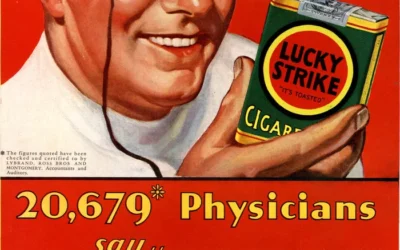
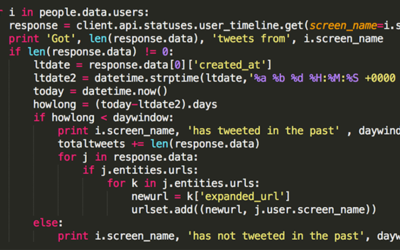





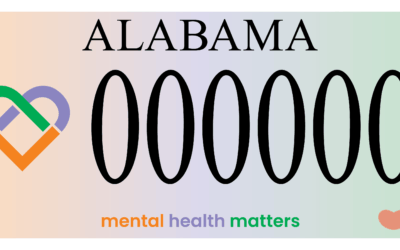

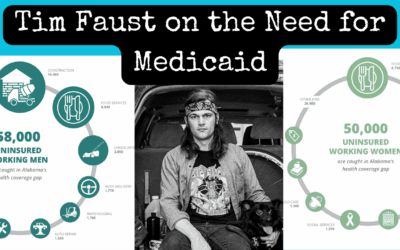
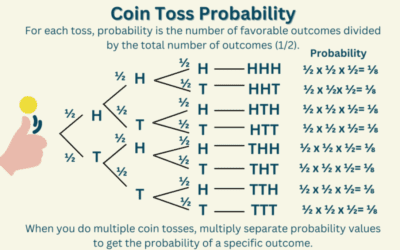

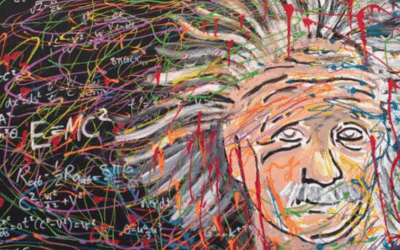


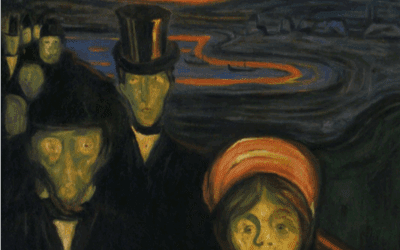


0 Comments